 WARNING THESE MODIFICATIONS ARE EXTREMLY DANGEROUS FOR PEOPLE WITH LOW EXPERIENCE TO SMPS HIGH VOLTAGE CIRCUITS. DO NOT ATTEMP THESE MODIFICATIONS IF YOU ARE NOT AN ELECTRONIC ENGINEER OR AUTHORIZED TECHNICIAN ELECTRICITY CAN HARM YOURSELF PERMANENTY, IT CAN CAUSE DISABILITY OR DEATH. I’M NOT RESPONSIBLE OR I HAVE NOTHING TO DO WITH YOUR ACTIONS. IF YOU DON’T UNDERSTAND PLEASE LEAVE THIS PAGE IMMEDIATELY. There Was An Emergency Task To Build A 12V 180A Power Supply But there was a deadline & I couldn’t Design It From The Beggining Spending Days & Weeks For A Single Lab Unit, So I decide To Use My Experience In SMPS Reverse Engineering. The First High Power SMPS I Was Found A HP PS3701-1 Spare Part Number 365063-001 From An Old ML350 Server Looks A Great Choise. The Reason Is Too Simple, All This Units Designed To Work In Parallel Mode Into HP Servers, So For Parallel Use I Had To Worried About The Lenght & The Diameter Of The Cabling Inside the Enclosure & Finally I Need To Use The Same Lenght Of Cables If I Had To Parallel More Than One Units.
WARNING THESE MODIFICATIONS ARE EXTREMLY DANGEROUS FOR PEOPLE WITH LOW EXPERIENCE TO SMPS HIGH VOLTAGE CIRCUITS. DO NOT ATTEMP THESE MODIFICATIONS IF YOU ARE NOT AN ELECTRONIC ENGINEER OR AUTHORIZED TECHNICIAN ELECTRICITY CAN HARM YOURSELF PERMANENTY, IT CAN CAUSE DISABILITY OR DEATH. I’M NOT RESPONSIBLE OR I HAVE NOTHING TO DO WITH YOUR ACTIONS. IF YOU DON’T UNDERSTAND PLEASE LEAVE THIS PAGE IMMEDIATELY. There Was An Emergency Task To Build A 12V 180A Power Supply But there was a deadline & I couldn’t Design It From The Beggining Spending Days & Weeks For A Single Lab Unit, So I decide To Use My Experience In SMPS Reverse Engineering. The First High Power SMPS I Was Found A HP PS3701-1 Spare Part Number 365063-001 From An Old ML350 Server Looks A Great Choise. The Reason Is Too Simple, All This Units Designed To Work In Parallel Mode Into HP Servers, So For Parallel Use I Had To Worried About The Lenght & The Diameter Of The Cabling Inside the Enclosure & Finally I Need To Use The Same Lenght Of Cables If I Had To Parallel More Than One Units.  Specifications 1. Input 100-240VAC 2. Output Main Output +12V/60A, A Small Negative -12V/0.5a, & An Auxiliary Output +5V/1A First Of All I Had To Check My Memory About These PSU’s, Are Well Protected Against Short Circuit & Reverse Polarity? Yes!!! It Was Absolutely True. Each Of These Units Can Be Used In Series & Parallel Mode With A Few Modifications BUT NEVER TRY TO DO IT IF YOU ARE NOT A AUTHORIZED TECHNICIAN WITH EXPERIENCE TO HIGH POWER SMPS UNITS. There Was An Issue With The Negative Output Pole It Was Grounded & The Chassis Too But We’d Like A Grounded Chassis Anyway, So That Was Not Ideal For Serial Mode Use, It Could Be A Nightmare Trying Connect Two Units In Series Mode! I Had To Modify Each Unit Except The First One IN ANY CASE THIS ONE MUST BE GROUNDED So I Made A Decision To Teardown A Unit, But Before I Took A Few Measurements To Verify & Secure The Success Story…lol. As You Can See At The Photo There Are Four Outputs 12V At The Left & Right, But You Have To Split The Outputs Using 15 Amps Fuses To Avoid Possible Over Current Damage To Output Pads & Traces. All You Need To Know About Outputs Was Marked, See The Next Foto.
Specifications 1. Input 100-240VAC 2. Output Main Output +12V/60A, A Small Negative -12V/0.5a, & An Auxiliary Output +5V/1A First Of All I Had To Check My Memory About These PSU’s, Are Well Protected Against Short Circuit & Reverse Polarity? Yes!!! It Was Absolutely True. Each Of These Units Can Be Used In Series & Parallel Mode With A Few Modifications BUT NEVER TRY TO DO IT IF YOU ARE NOT A AUTHORIZED TECHNICIAN WITH EXPERIENCE TO HIGH POWER SMPS UNITS. There Was An Issue With The Negative Output Pole It Was Grounded & The Chassis Too But We’d Like A Grounded Chassis Anyway, So That Was Not Ideal For Serial Mode Use, It Could Be A Nightmare Trying Connect Two Units In Series Mode! I Had To Modify Each Unit Except The First One IN ANY CASE THIS ONE MUST BE GROUNDED So I Made A Decision To Teardown A Unit, But Before I Took A Few Measurements To Verify & Secure The Success Story…lol. As You Can See At The Photo There Are Four Outputs 12V At The Left & Right, But You Have To Split The Outputs Using 15 Amps Fuses To Avoid Possible Over Current Damage To Output Pads & Traces. All You Need To Know About Outputs Was Marked, See The Next Foto. 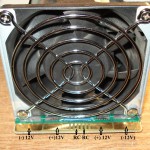 I Had To Measure Each Output & To Take A Closer Look To The Whole PSU Design & Construction. I Noticed That The Green Status Light At The Back Side It Was Activated Only If I Had To Connect The Remote Control Switch Between The Pin RC & (-) Negative All Negative Outputs Are Located At The Left & Right Sides At The Edge You Can Connect It everywhere.
I Had To Measure Each Output & To Take A Closer Look To The Whole PSU Design & Construction. I Noticed That The Green Status Light At The Back Side It Was Activated Only If I Had To Connect The Remote Control Switch Between The Pin RC & (-) Negative All Negative Outputs Are Located At The Left & Right Sides At The Edge You Can Connect It everywhere. 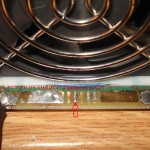 Now I Had To Do A Careful Inspection About The Ground So I Had To Take A Closer Look At The Front Side Where Located The FAN & The Power Outputs. Aha!!! There Was An Issue There, The Enclosure Chassis Was In Contact With The Negative Outputs. I Had To Isolate This Area To Avoid A Connection Between Main Ground & Negative Output Pole For Each PSU Which Was The Second Or The Third In Series Of The Array. A Thin PVC Foil Placed With Silicon Glue To Isolate The Area As You Can See At The Next Foto
Now I Had To Do A Careful Inspection About The Ground So I Had To Take A Closer Look At The Front Side Where Located The FAN & The Power Outputs. Aha!!! There Was An Issue There, The Enclosure Chassis Was In Contact With The Negative Outputs. I Had To Isolate This Area To Avoid A Connection Between Main Ground & Negative Output Pole For Each PSU Which Was The Second Or The Third In Series Of The Array. A Thin PVC Foil Placed With Silicon Glue To Isolate The Area As You Can See At The Next Foto  After This I Had To Teardown The PSU To Continue The Mods! Take A Look After Removing The One Piece Of Enclosure.
After This I Had To Teardown The PSU To Continue The Mods! Take A Look After Removing The One Piece Of Enclosure.  The First Thing I Had To Do Was To Remove The Ground Connection Between The Chassis & The Negative PCB Output Which Located Beside The Small Vertical Control Board. It Was Very Easy By Removing The Screw As Shown At The Next Foto
The First Thing I Had To Do Was To Remove The Ground Connection Between The Chassis & The Negative PCB Output Which Located Beside The Small Vertical Control Board. It Was Very Easy By Removing The Screw As Shown At The Next Foto  Then I Had To Place A Small Foil Of PVC With Silicon Glue Between The Chassis Spacer & The PCB.
Then I Had To Place A Small Foil Of PVC With Silicon Glue Between The Chassis Spacer & The PCB. 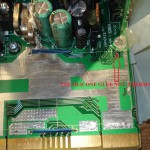 DON’T PLACE THE SCREW BACK
DON’T PLACE THE SCREW BACK  After This MOD I Had To Isolate The Main PSU Circuit From Earth Ground But I Had To Place A Capasitor Between Earth Ground & Main PSU Board For Ground Isolation & To Make A Path For AC Signals Between Ground & Main Board PCB. First Of All I Had To Move The Isolation Tube Sield From The Mains Plug Ground Pole. Then I Had To Remove The Yello Ground Cable From The Main’s Ground Pole
After This MOD I Had To Isolate The Main PSU Circuit From Earth Ground But I Had To Place A Capasitor Between Earth Ground & Main PSU Board For Ground Isolation & To Make A Path For AC Signals Between Ground & Main Board PCB. First Of All I Had To Move The Isolation Tube Sield From The Mains Plug Ground Pole. Then I Had To Remove The Yello Ground Cable From The Main’s Ground Pole  Then I Had To Place A Capasitor Between The Cable & The Ground Pole. It Was Very Importand To Isolate Everything Included Capasitor & Cables After This Modification. A Capasitor Value of 100nf/275V AC X3 Series Or Greater Voltage It Will Be Fine.
Then I Had To Place A Capasitor Between The Cable & The Ground Pole. It Was Very Importand To Isolate Everything Included Capasitor & Cables After This Modification. A Capasitor Value of 100nf/275V AC X3 Series Or Greater Voltage It Will Be Fine.  After All These Mods I Had To Close The Enclosure Back. PLEASE READ CARFEFULLY IT’S VERY IMPORTANT!!! I Had To Check About Any Unwanted Connections Between Chassis & Negative Outputs Before I Close The Enclosure. I Turn On The Switch Of The Non Grounded Second Unit & Between Ground & Negative Output Or Positive Pole Finally Was Measured At Least 110V AC!!! Next Step Was To Build An Automation Circuit & A Front Panel PCB To Protect Myself For Possible AC Leak Voltage At The Outputs When It Was In Use At The Bench. This Circuit Was An AC Signal Detector With Optical & Sound Alarm, I Think It’s Time To Explain It.
After All These Mods I Had To Close The Enclosure Back. PLEASE READ CARFEFULLY IT’S VERY IMPORTANT!!! I Had To Check About Any Unwanted Connections Between Chassis & Negative Outputs Before I Close The Enclosure. I Turn On The Switch Of The Non Grounded Second Unit & Between Ground & Negative Output Or Positive Pole Finally Was Measured At Least 110V AC!!! Next Step Was To Build An Automation Circuit & A Front Panel PCB To Protect Myself For Possible AC Leak Voltage At The Outputs When It Was In Use At The Bench. This Circuit Was An AC Signal Detector With Optical & Sound Alarm, I Think It’s Time To Explain It. 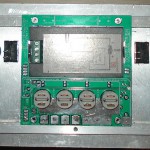 I Had To Built 3 Of These PSU’s For Parallel & Series Use. As I Wrote Before The Second & Third Unit’s Was Floated Not Grounded So Any Possible Leak AC Voltage Can Harm Myself Or Any Connected DUT. I Had To Include A Protection Circuit For Myself & Other Users Safety, F.E. iF Someone Tries To Turn On The Second Ungrounded Unit & Working With It The Unit Will Be Floating & There It’s Quite Possible To Harm Himself Or DUT’s. So For Everyone Unsuspected Or layman Guy There Was A Back Door Directly To Death! This Issue Can Be Resolved With Warning Optical & Sound Alarm To Prevent The Possible Damage Or Failure In Case The Ground Was Missed Or Forgotten. My Suggestion Is To Read My Thoughts & Use This Device Wisely. When You Using These As Stand Alone Units. Don’t Touch The Output Or Connect A Device At The Second Or Third Unit Without Earth Ground Present At The Negative Pole Both Of These Units Please Take A Look At The Following Foto, Each Output Has It’s Own Thermal Fuse At 15A Each Unit Has 4 Outputs That Means 15mps x 4 = 60Amps. Each Unit Must Have The Same Leangh Of Cabling To Avoid Possible Port Over Load. Each Cable For Internal Cabling Is 8 AWG FOC (Free Oxygen Copper) Except The Main Negative Cable Which Is 4 AWG FOC Too.
I Had To Built 3 Of These PSU’s For Parallel & Series Use. As I Wrote Before The Second & Third Unit’s Was Floated Not Grounded So Any Possible Leak AC Voltage Can Harm Myself Or Any Connected DUT. I Had To Include A Protection Circuit For Myself & Other Users Safety, F.E. iF Someone Tries To Turn On The Second Ungrounded Unit & Working With It The Unit Will Be Floating & There It’s Quite Possible To Harm Himself Or DUT’s. So For Everyone Unsuspected Or layman Guy There Was A Back Door Directly To Death! This Issue Can Be Resolved With Warning Optical & Sound Alarm To Prevent The Possible Damage Or Failure In Case The Ground Was Missed Or Forgotten. My Suggestion Is To Read My Thoughts & Use This Device Wisely. When You Using These As Stand Alone Units. Don’t Touch The Output Or Connect A Device At The Second Or Third Unit Without Earth Ground Present At The Negative Pole Both Of These Units Please Take A Look At The Following Foto, Each Output Has It’s Own Thermal Fuse At 15A Each Unit Has 4 Outputs That Means 15mps x 4 = 60Amps. Each Unit Must Have The Same Leangh Of Cabling To Avoid Possible Port Over Load. Each Cable For Internal Cabling Is 8 AWG FOC (Free Oxygen Copper) Except The Main Negative Cable Which Is 4 AWG FOC Too.  For This Project We Bought Cheap LCD Panel Meters For Voltage, Current, Power & Energy Data Logging. You Can See The Front Panel Inclunding Switches, Heavy Duty PCB Terminal Block Outputs, Panel Multi Meters, Thermal Resetable Fuses, Warning Sings Instructions & Functions. This Is The 40Amps Output Version Per Unit, The Latest One Was 60Amps Per Unit.
For This Project We Bought Cheap LCD Panel Meters For Voltage, Current, Power & Energy Data Logging. You Can See The Front Panel Inclunding Switches, Heavy Duty PCB Terminal Block Outputs, Panel Multi Meters, Thermal Resetable Fuses, Warning Sings Instructions & Functions. This Is The 40Amps Output Version Per Unit, The Latest One Was 60Amps Per Unit.  Inside The Enclosure You Can See Three 100Amps Shunts One For Each PSU.
Inside The Enclosure You Can See Three 100Amps Shunts One For Each PSU.  Each Unit Has A Independent Input For Tha Main AC At The Back Side Panel.
Each Unit Has A Independent Input For Tha Main AC At The Back Side Panel. 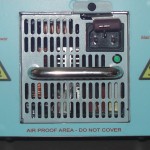 Suggested Connection Diagram Below There Was An Error Typing 108Amps In Parallel The Right Is 180Amps!
Suggested Connection Diagram Below There Was An Error Typing 108Amps In Parallel The Right Is 180Amps! 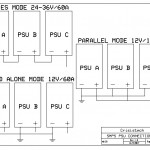 Conclusions It’s Working Like A Charm! Alarms Are Working Pretty Well Too. We’ve Test It At 36V In Seies At 55Amps & It Was Perfect. We’ve Tested As 12V Stand Alone Each Unit But With Grounded For All Units The Common (-) Outputs 12V/55Amps. Finally The Great Test 12V/140Amps Rated To A Power Inverter! Kind Regards Akis T
Conclusions It’s Working Like A Charm! Alarms Are Working Pretty Well Too. We’ve Test It At 36V In Seies At 55Amps & It Was Perfect. We’ve Tested As 12V Stand Alone Each Unit But With Grounded For All Units The Common (-) Outputs 12V/55Amps. Finally The Great Test 12V/140Amps Rated To A Power Inverter! Kind Regards Akis T 
This is a Front Panel board for most wanted RDVV PLL.
It can be used for all common versions from beggining until the 2006’s Versions.
The PCB design contains the following functions including a few older partitial designs i made many years ago for similar personal projects.
1. Analog Volume Control
2. Analog Power Control
3. RDVV LCD Main Display attached
4. Audio Peak Detector with Led
5. Analog Audio Level Meter (1991)
6. Analog PWR/SWR Meter (Only the panel meter session with the level controll but without PWR/SWR Coupler) (1987)
7. Thermal Protection for the RDVV Power Stage & For A Possible Linear Amplifier as a next power stage. (1983)
8. Tone Test Generator 1Khz (1981)
9. Mono MPX AF Input Selector.
10. Premphasis 50/75us Included + Input Selector. (1981)
11. SWR & Thermal Protection with optical & sound alarm. (1987)
Schematics, Gerbers And BOM List Are Available
This project is for sale, available for manufactures only.
For technical – hardware and purchase inquiries contact at : akis@crisistech.com
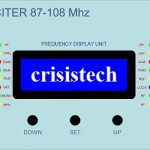


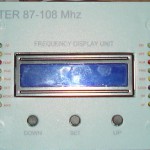



Recent Comments